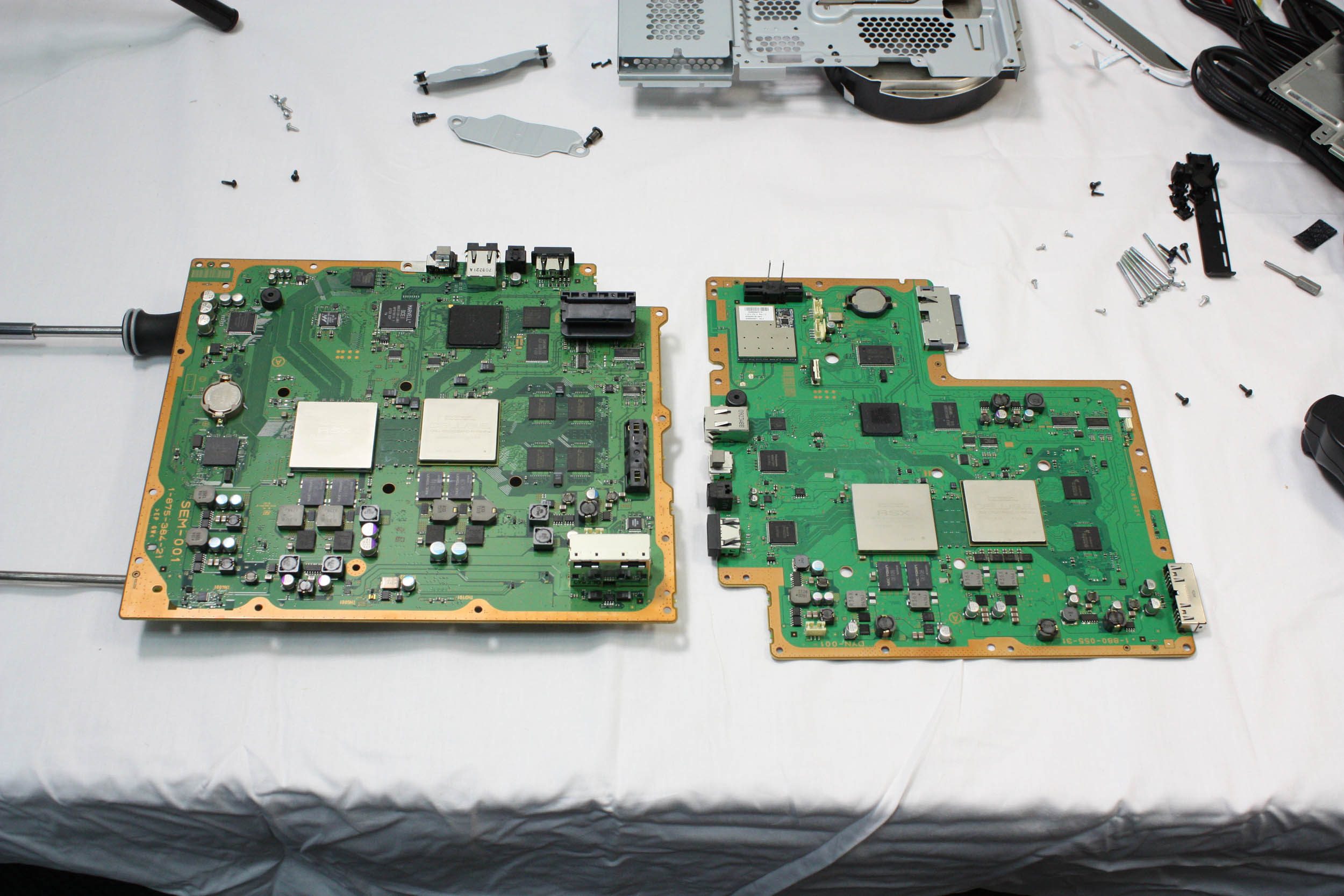Don't be so sure about there being no changes just because the model numbers are close. Yes there can be vast differences. For example someone on the first page said he also has a 40gb PS3 like the first one mentioned and went on to compare the two, his one being just one model newer CECHH vs CECHG literally could be a day apart or even half day in production, but in fact the CECHH model he has is vastly different to the CECHG I tested with.
Here are the motherboards from a CECHG and the CECHG.
Keep in mind BOTH are 40GB fat ps3. Thats why i keep saying its not enough just to say what playstation and hdd size you have. You need to know the model number
Here
I dont know what your specific model is like, I only reported
what I observed on the models I tested.
I tried various configurations of settings, I guess mostly I ran with the game with deep color on but dynamic range to limted. I always kept sharpen image to off as that seemed to highlight differences most. I only mentioned it as I noticed it seemed to increase FPS in the slower systems.
However regardless of the settings, some consoles were always ahead of others. The CECH3002B for example had no trouble running the game even with both dynamic range to full and deep color options set to on, and it even outperformed the 2001a even with all this off and sharpen on enable.
Having all the options enabled and no sharpen on the 2001a dropped the fps down to as low as what felt like 25fps in some case. I say this based on my perception only. I am not making any factual claims. As a PC gamer very in tune with FPS since about 1996 I can tell the differences pretty easily as I played counter strike competitively on a 100hz monitor and 100fps and the slightest drop would alter the game for me.
On top of this, there can also be manufacturing differences, even between the same models.
Keep in mind the cell processor has one core as a "backup". I am not sure what this means but its possible they have it there just in case one of the cores tuns out to be a dud during manufacture and they can still use the chip instead of throwing it away.
They can possibly utilze this backup core on the ps3s that have it available, and ofcourse the ones with the dud core will perform slower. This is pure speculation of course. Maybe someone can shed some more light on what this "backup core" is all about, but its just a theory.
There can also be differences in how the ps3 has been kept temperature can affect how the ps3 runs etc. I am not sure if the ps3 downclocks due to temperature, but its easily possible.
Lastly, as I've already stated, some people simply do not notice tearing or drops in FPS. I have seen this first hand. It is quite possible your ps3 is exhibiting this, but you do not notice it.


 the TV should have black level adjustment - when I set to full for games, I set my tv black level to full to make use of it, then when I want to view Bluray movies, I set it to Limited on PS3, and Black level Low on TV
the TV should have black level adjustment - when I set to full for games, I set my tv black level to full to make use of it, then when I want to view Bluray movies, I set it to Limited on PS3, and Black level Low on TV  I have my TV calibrated both for movies and games on separate settings.
I have my TV calibrated both for movies and games on separate settings.